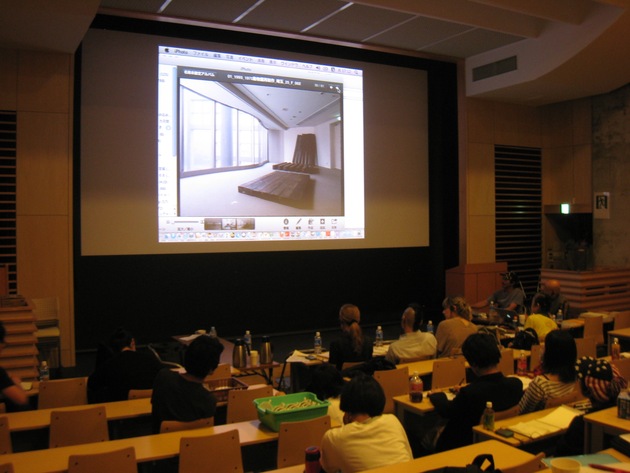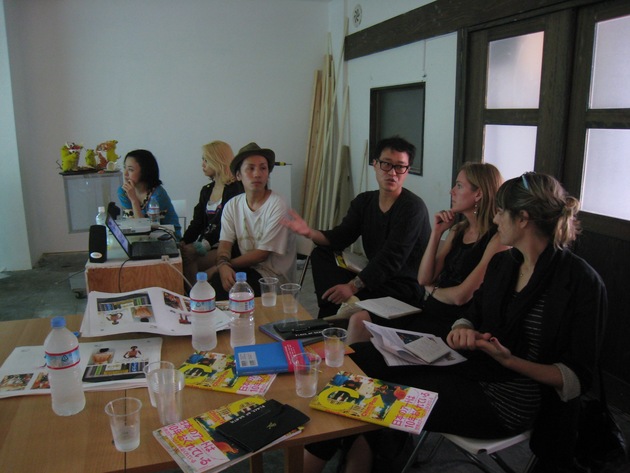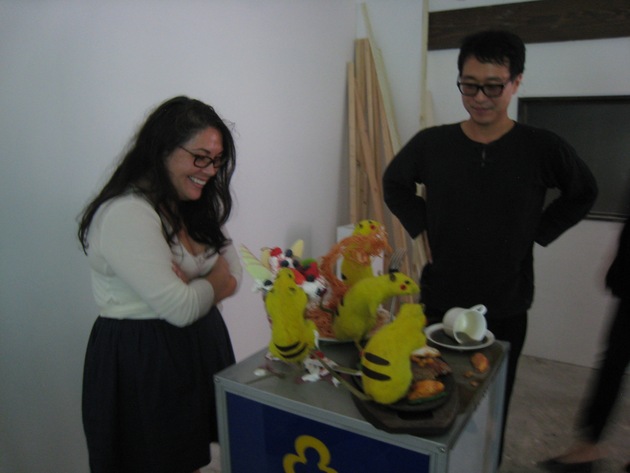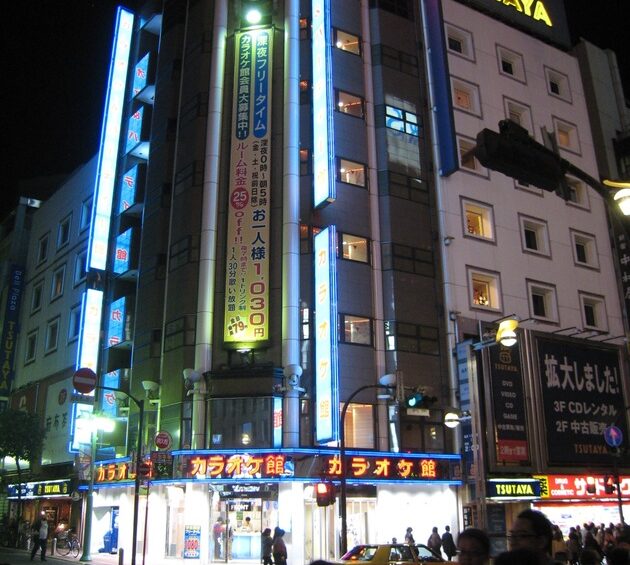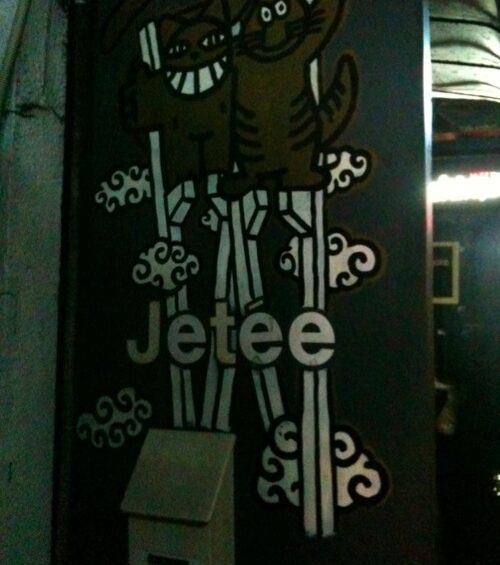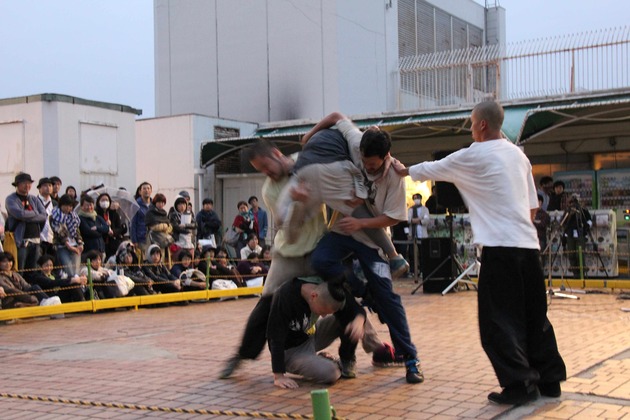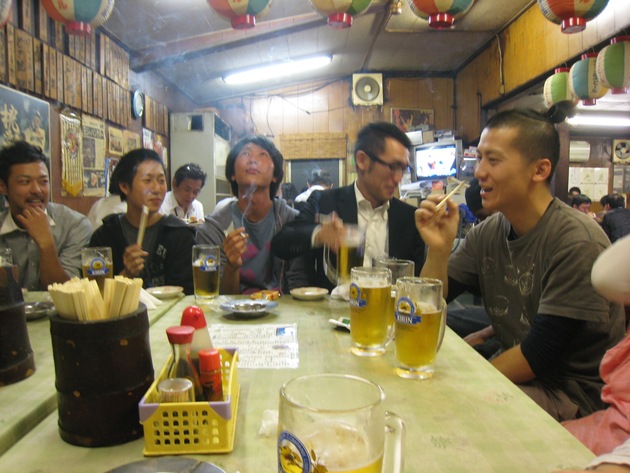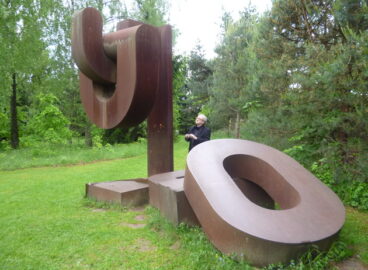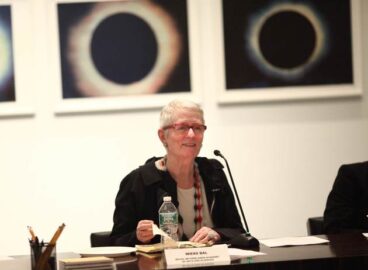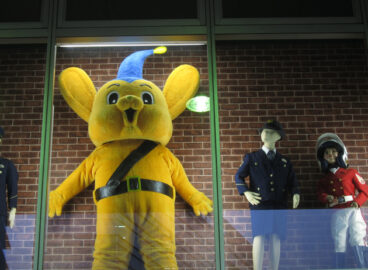From museum storage rooms and Butoh dance performances to gallery visits and Shinjuku by night, a group of MoMA curators in the C-MAP research group led by Associate Curator Doryun Chong went to Japan in the fall of 2011. The goal: to visit the people and places that have been crucial in the curators’ research on performative art in postwar Japan. The group visited eleven museums, ten-plus galleries, two studios, archives, performance venues, and tiny Shinjuku alleyways and drinking holes that played important roles in 1960s avant-garde film. During the trip, the MoMA group met with more than forty artists, critics, scholars, and gallery owners. For a handful of the curators, this was their first trip to Japan. Explore the images and notes by the members of the group to discover what they encountered and some of the highlights of the trip. And tell us what you think they missed: Are there galleries, studios, museums, restaurants, or bars that you enjoy visiting in the Tokyo and Osaka areas (and beyond) that are not included here? If so, share them with us!
Day 1
Keio University Art Center and Archives
By Michelle Elligott
Great to see the Sogetsu ephemera collections at the Keio University Art Center. The Sogetsu materials dovetail nicely with pieces we have (including great Akiyama Kuniharu material) in the Museum’s Gilbert and Lila Silverman Fluxus Collection Archives. The unique materials (like the letters in the Takiguchi Shuzo Papers) were wonderful.
Materials at the Keio University Art Center and Archives
By Michelle Elligott, Christopher Y. Lew, Nancy Lim
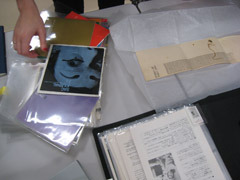
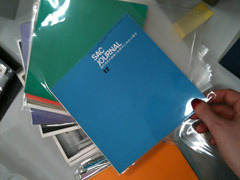
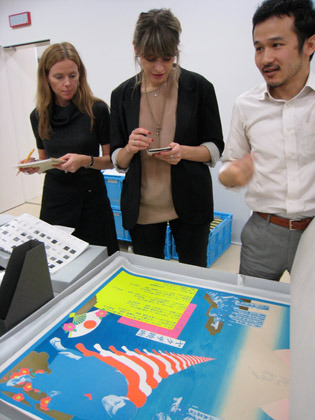
Roundtable at Tokyo University of the Arts
Organized by Kobata Kazue, the roundtable at the Tokyo University of the Arts started with Kobata’s introduction on performance and perfomativity in Japanese art in the 1960s. She screened 8mm film footage of Hijikata Tatsumi’s performance Revolt of the Flesh, and spoke about the activities of the Ankoku Butoh movement. Kobata raised an interesting point regarding the relation of painting and performance in 1960s Japanese art.
I was particularly struck by the work of Tadasu Takamine (born in 1968, lives and works in Kyoto), who was a member of a radical performance group Dumb Type. Tadasu is a very interesting artist with radical video and performance practices dealing mainly with politics and sexuality. During the roundtable, the artist screened his controversial video piece Kimura-san (1998), featuring footage of the artist providing sexual relief for a disabled friend, as well as the performance he did during his residency in New York of exchanging clothes at flea markets in the East Village in 1993. He is well-known for his video God Bless America, shown at the Venice Biennale in 2003. For eighteen days, Tadasu and his female partner lived in an entirely red room, filming themselves as they worked, ate, slept, and had sex. In the resulting time-lapse footage, we see them kick and punch a sculpture into being: a giant head, resembling George W. Bush, which continually sings God Bless America.
Roundtable at Tokyo National University of Fine Arts and Music
By Nancy Lim
Day 2
Meeting with Hisano Atsuko of the Saison Foundation
Founded in 1987, the Saison Foundation is one of the leading organizations providing grants to contemporary theater and dance groups from Japan and abroad, offering residency and studios for rehearsal. Its origins are in Studio 200, an experimental artistic space from the 1980s that was situated in the Ikebuko department store. The white box of Studio 200 hosted performances by Hijikata, Teshigawara Saburo (an important figure in contemporary dance during the ’80s), and concerts by rock groups from Korea and China.
The Saison Foundation, with Hisano Atsuko
By Nancy Lim
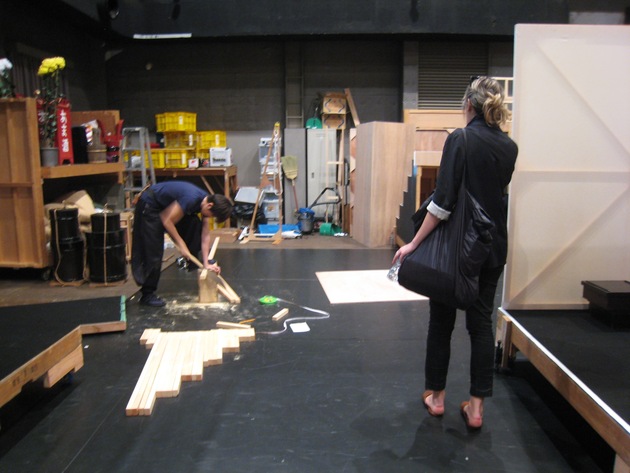

Chim↑Pom: Not Just Provocations
By Doryun Chong
I used to feel unsure as to where this young group’s provocations were headed. In the wake of the disasters in Tohoku in 2011, and seeing their courageous series of projects and performances, I’m beginning to think that they really have a sense of purpose and mission—trying to shake the art scene and even the wider society, which perhaps have grown too comfortable and complacent after many decades of stability and prosperity. http://chimpom.jp/
Meeting Chim↑Pom
By Christopher Y. Lew
Chim↑Pom presented an overview of their work, which includes projects from their solo show Real Times, made in response to the March 11 disaster at Fukushima. It’s amazing how quickly they reacted. They made a powerful series of videos and actions: they collaborated with local youths in Soma City, raised a flag in dangerous proximity to the Daiichi plant, and made a polemical intervention in Taro Okamoto’s mural in Shibuya train station.
A Visit to MUJIN-TO Production’s Gallery
By Nancy Lim
Mori Art Museum
By Nancy Lim

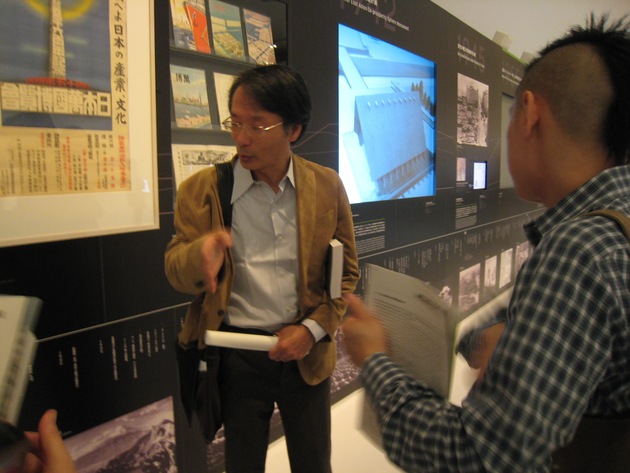
“METABOLISM” Exhibition at Mori Art Museum
Visit to the Mori Art Museum and the exhibition METABOLISM: The City of the Future. Dreams and Visions of Reconstruction in Postwar and Present Day Japan. Very extensive exhibition about the most widely known modern architectural movement to have emerged in Japan in the 1960s. Meeting with Mami Kataoka, the museum’s chief curator, after a walkthrough.
Kudos to the “METABOLISM” Team!
By Doryun Chong
I think we were blown away by the depth of the scholarship, impeccable installation, and of course, the richness of the subject itself. Kudos to the Mori!
Dinner with Minemura Toshiyaki, Hirasawa Go, and Hayashi Mihchio
By Nancy Lim
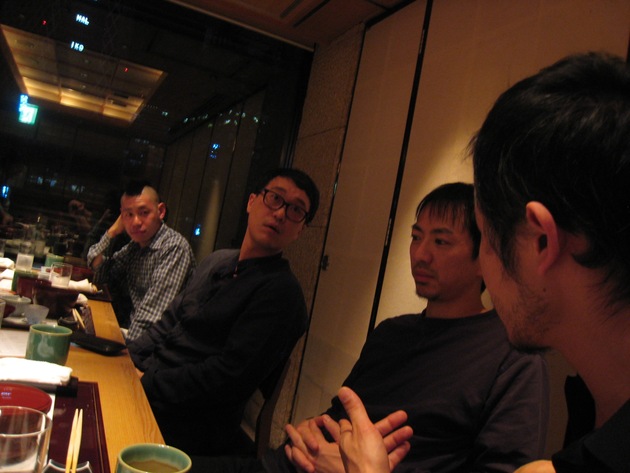
Film Critic Hirasawa Go’s Shinjuku Night Tour
By Doryun Chong, Christopher Y. Lew, Nancy Lim
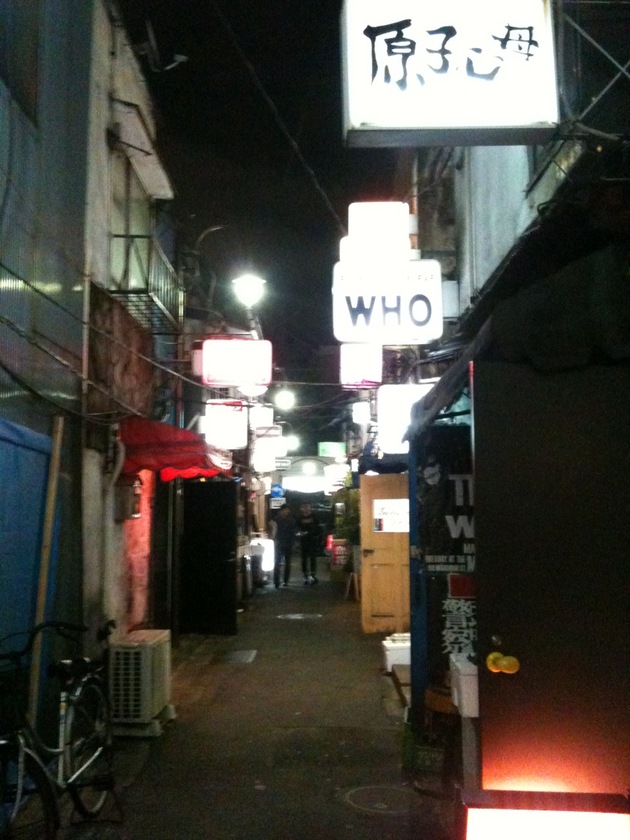
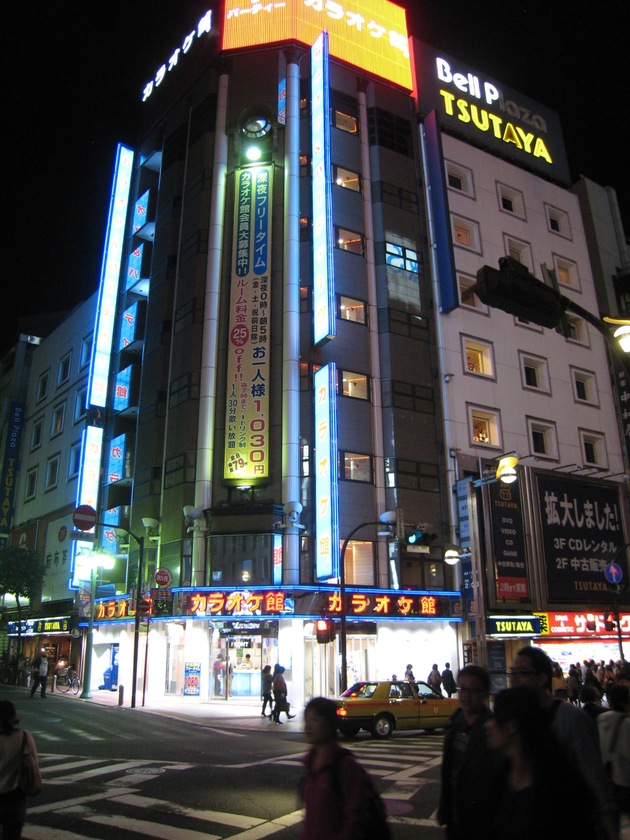


Day 3
A Visit to the Hara Museum
By Doryun Chong, Michelle Elligott
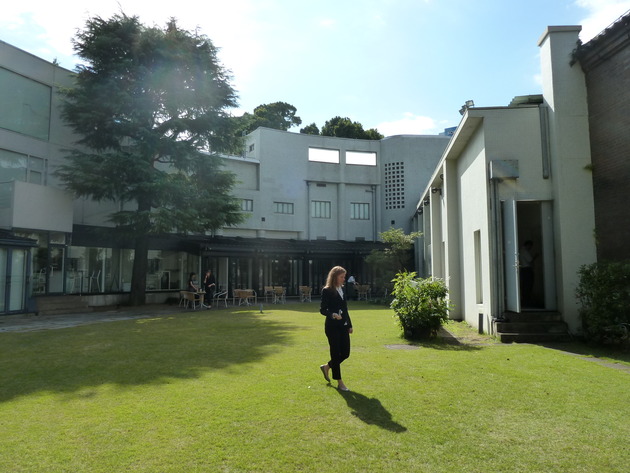
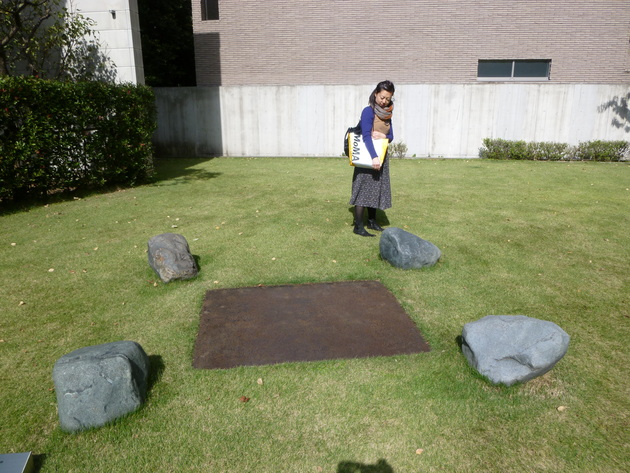
Utterly delightful: loud, semi-naked cabbage throwing and water spitting
By Sarah Suzuki
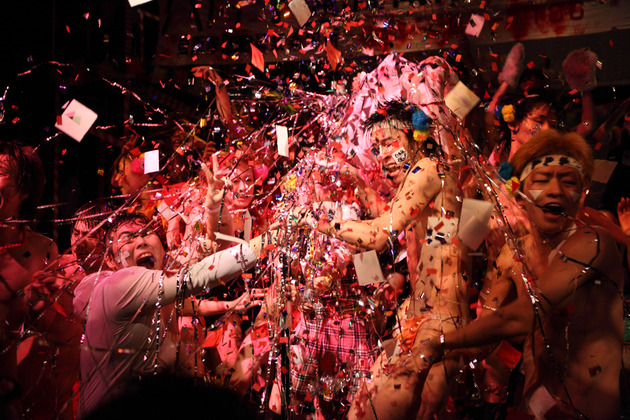
In the evening, the group went to see a spectacular performance by the Banana Gakuen Theater Company and were blown away by the energy!
バナ学バトル★☆熱血スポ魂秋の大運動会!!!!! (Super Spunky Sports Autumn Grand Tournament!!!!! 2011)
We Are BANANA!!
By Banana Gakuen Theater Company
Hello Guys!! We are BANANA!! from Tokyo made in Dangerous JAPAAAAAAAAAAAN!!!!!
Thanks for your LOVE to BANANA.
Ecstatic Critique?
By Doryun Chong
There are about 40 to 50 performers, split equally between men and women on a stage that’s barely big enough to hold all of them. But somehow, they manage to jump up and down and around, dancing and singing like a giant boyband or girlband-cum-cheer squad en masse in constantly changing formations for over an hour! It’s also like Billy Blanks’ Taebo or one of those extreme, military-style workouts. We were overwhelmed by the constant sensory overload, including some of those sweat-drenched actors running into the audience. The director, Nikaido Toco, who later joins the troupe on the stage, was incredible too. She sounded like Kim Carnes screaming at the top of her lungs while doing all those moves in perfect sync with her actors. In the midst of this madness, there’s actually something serious and a complexity there. Sonically and visually, they reproduce a struggle of the sensory overload of Japanese mass media, where any meaningful message is impossible to hear unless you can project even louder over that noise. Maybe their performances are an ecstatic critique of the uniformity that they at the same time wear and abuse in school uniform.
Day 4
National Museum of Art, Osaka
By Michelle Elligott
Two highlights of the National Museum of Art, Osaka, included a Shiraga Kazuo painting dedicated to Michel Tapié and a wild, surrealistic Tiger Tateishi painting depicting a samurai, the KKK, Mao, and a crawling child. (We all agreed Doryun should include it in his Tokyo exhibition!)
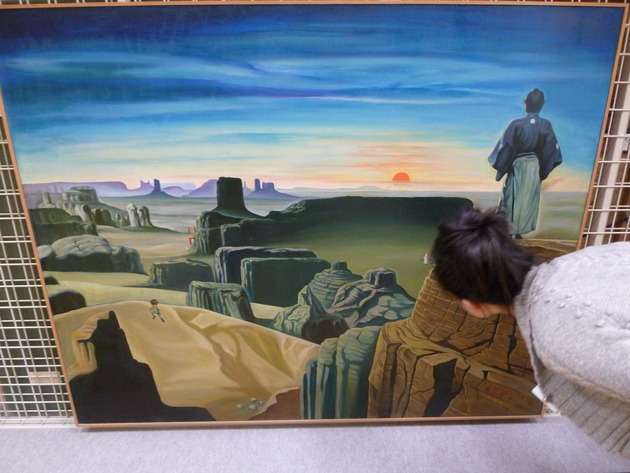
Breaker Project
By Nancy Lim

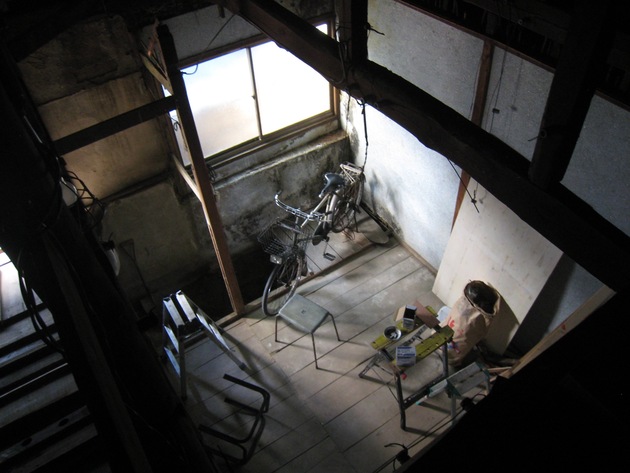
Breaker Project
By Nancy Lim
Breaker Project is a cultural organization that started in 2003. Based in Osaka, it supports a variety of community-based art projects and presents them in temporary exhibition spaces throughout the Kansai region. At the time of TsukaharaYuya’s installation, Breaker Project occupied a two-story, multifamily residential unit from the early 20th century that the current artist-in-residence discreetly transformed by means of delicate light, sound, and sculptural installations that fiddle with the infrastructure. One room was also modified to include a sleeping area for overnight visitors, and on the floor above, an enclosed platform was built in the otherwise unstable attic (the artist had fallen through the attic floor a few months prior and broken his arm). The project was accompanied by varied educational programming intended to engage the local community indefinitely — even after the show closes and Breaker Project moves on.
Contact Gonzo
By Nancy Lim
Contact Gonzo is a performance group from Osaka founded in 2006 by Tsukahara Yuya and the dancer Kakio Masaru. Gonzo means “eccentric” or “hooligan”; the name comes from Gonzo journalism of the ’70s in the United States. The group has developed a very specific form of contact improvisation and Russian-style Aikido. Based on physical ability and trust, its innovative practice is at the crossroads of contemporary dance, performance, and street actions. Contact Gonzo’s first works were performed outdoors, mainly inspired by street and skate culture, and uploaded on YouTube. Recently they have been performing in many festivals and art spaces in Japan and Europe. The group has also developed a an innovative strategy of documenting their performances.
Contact Gonzo Live
By Eva Respini
I traveled across town to the Kichijoji area of Tokyo to catch a performance by the Osaka-based performance collective contact Gonzo. We met the members of contact Gonzo in Osaka, and they showed us documentation of their performances. This young collective straddles the worlds of dance, performance, and visual art: the founder is trained in theater design and dance, but other members come from the fields of graphic design and art, as well as dance. When I heard they were performing as part of the Teratotera Festival of contemporary dance and performance, I jumped at the chance to see them live. Contact Gonzo performed for 20 minutes on the roof of the Tokyu department store, in front of an audience of about fifty people.The performance included five of the six members (the sixth member was photographing and videotaping), was improvisational, and included water bottles and a single illuminated lightbulb as the only props. It was one of the most exhilarating performances I have seen, especially since it was punctuated by a dramatic darkening of the skies and light rain.
Day 5
Interviewing Shiomi Mieko
By Michelle Elligott
I had the honor and privilege of conducting an interview with Shiomi Mieko. A strikingly elegant and articulate artist, she spoke with insight and ease about her work and her participation in Fluxus activities. I especially appreciated her explanations of how she arranged the cards for the MoMA exhibition Thing/Thought: Fluxus Editions, 1962–1978 and her inspirations for Spatial Poem and Disappearing Music for Face. In regards to the latter, she stated her belief that anything can be music, even the shifting clouds. She once saw a young girl’s smile fading; she said it was like beautiful music.
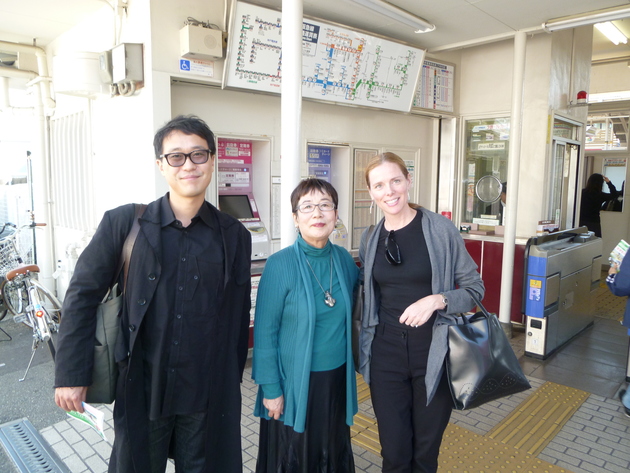
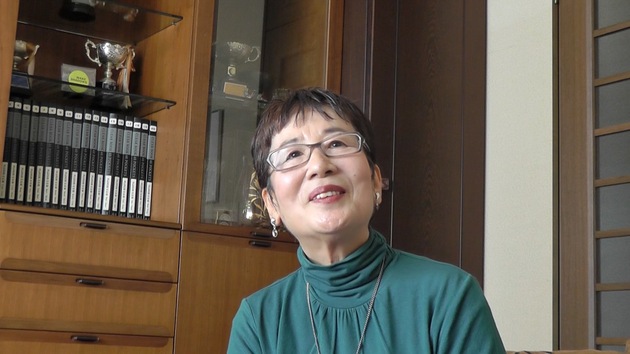
Day 6
Yumiko Chiba Associates, Ginza Showroom
By Eva Respini
My day in Tokyo began with a viewing of vintage photographs by Uematsu Keiji at the Ginza showroom of Yumiko Chiba Associates. We have only one work by Uematsu in MoMA’s collection, and I was excited by the opportunity to see more. The Uematsu exhibition included vintage 1970s prints of his performative actions in the landscape. With these works, he was seeking to draw out shapes in space and use his body to find the equilibrium point within a gravitational field, creating mutual interrelationships between the body, the object, and space. He is an artist who later became associated with the Mono-ha movement. It was interesting to see the little-known photographic works of an artist mostly known for his sculpture. In addition to the exhibition of works by Uematsu, there was a fascinating exhibition of conceptual photography titled To the 1970s: The Turning Point of Photography and Art. The exhibition traced conceptual photographic practices in the 1970s in Japan, including works by Masafumi Maita, Kanji Wakae, and Takamatsu Jiro’s 1972–73 series Photograph of a Photograph (one example is in MoMA’s collection). Many of the works in the exhibition explored the materiality of photography and an intermedia relationship. The works were made by artists rather than photographers, and at this time, photography emerged as a tool to escape known forms of visual perception and forge new visual languages. Many of the works and artists in this exhibition were new to me. It was exciting to become acquainted with a different tradition in Japanese photography.

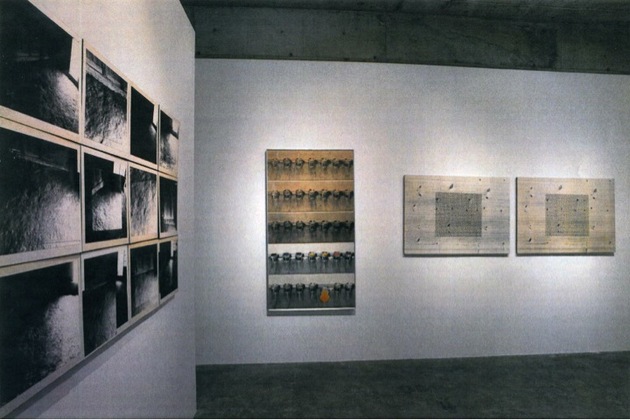
Day 7
Tokyo Metropolitan Museum of Photography
By Eva Respini

The Tokyo Metropolitan Museum of Photography has one of the best photography programs in the world. Kasahara Michiko is their chief curator and a friend. She is ambitious and inventive in her programming, and I was happy to see her again and to meet her fellow curators at the museum, Fujimura Satomi and Tasaka Hiroko. We viewed works from their storage collection, including Otsuji Kiyoji prints. The images dated from the 1950s, but the artist made the prints in 1989 and ’90, at the time of the museum’s opening. We also looked at photographs by Hosoe Eikoh, including works from his seminal collaboration with Butoh legend Hijikata Tatsumi for the book Kamaitachi, which involved a series of journeys to northern Japan in order to embody the presence of mythical, dangerous figures at the peripheries of Japanese life. At MoMA, we have works by Hosoe in the collection, but only a few from his collaboration with Hijikata. As always, there is no substitute for seeing works in the flesh, so to speak. We ended our visit of the museum with a viewing of the Naoya Hatakeyama exhibition Natural History. The exhibition was a survey of some 150 color photographs focusing on the landscape, including pictures made in Switzerland, France, and Japan. The exhibition included new work detailing the aftermath of the March 11 earthquake and tsunami in Hatakeyama’s hometown, one of the hardest hit areas. The work juxtaposed a slide show of pictures Hatakeyama had taken in his hometown before the destruction with some sixty photographs of the disaster and its aftermath. The exhibition also included a new video animation of his well-known explosion series, for which he scanned and animated his previously still photographs. This step represents a new artistic endeavor for Hatakeyama.

